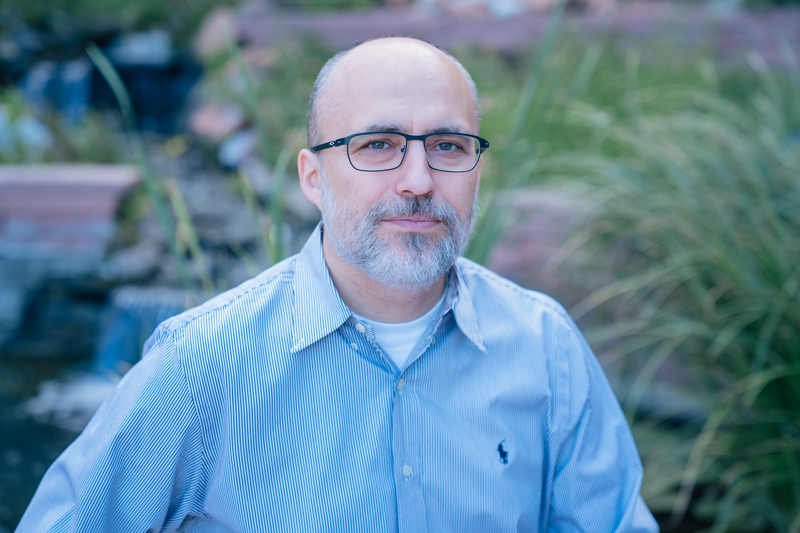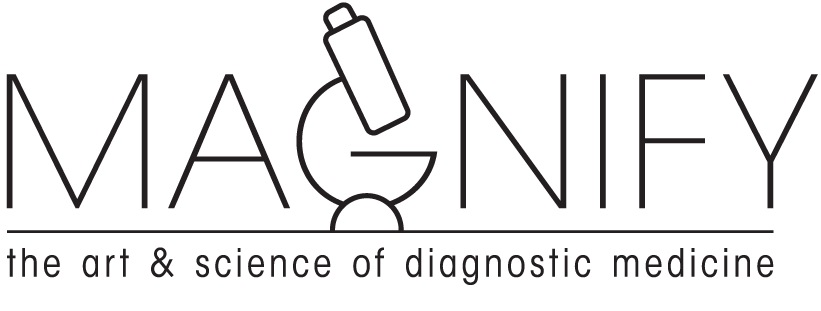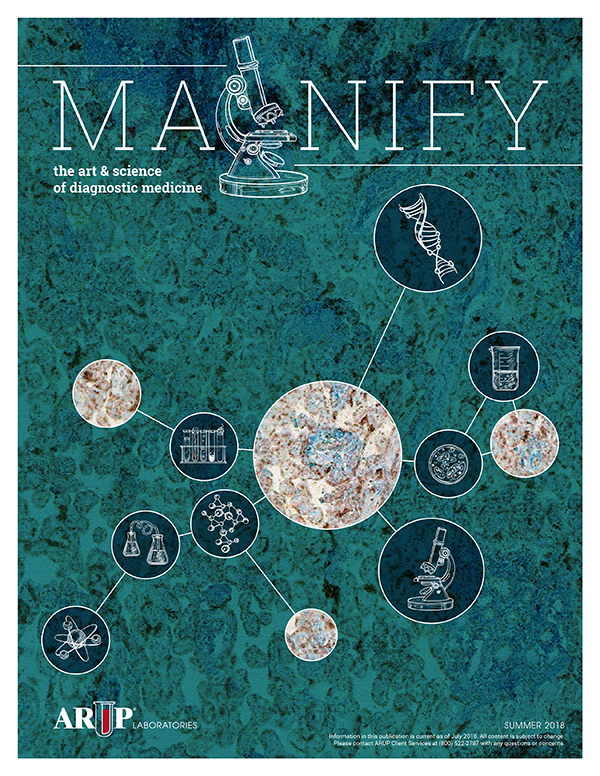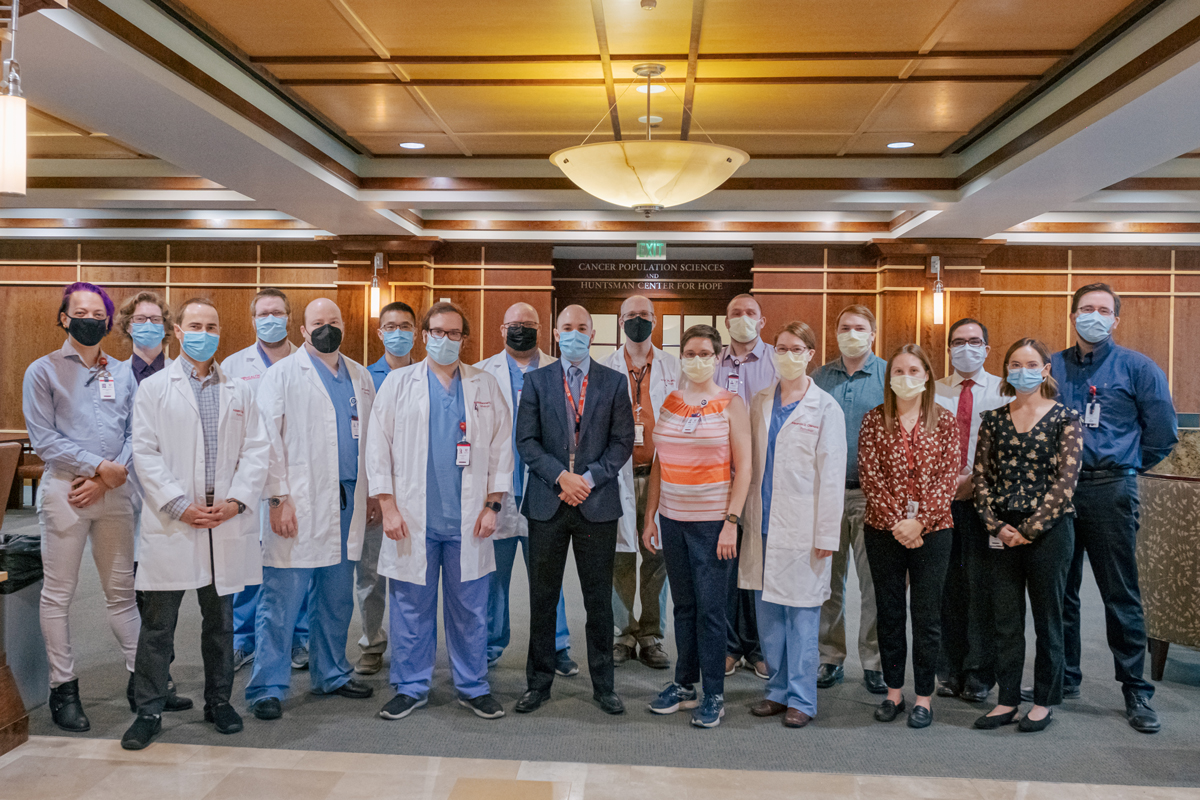Q&A With Former Fellow Alessandro Rossi
Alessandro Rossi, PhD, D(ABMM), chief scientist of Infectious Disease and CLIA director at the Utah Public Health Laboratory, was a microbiology fellow at ARUP Laboratories from 2015 to 2017. Over the course of his career, his work and research projects have advanced the field of clinical microbiology and guided public health interventions.

Alessandro Rossi, PhD, D(ABMM), chief scientist of Infectious Disease and CLIA director at the Utah Public Health Laboratory, was a microbiology fellow at ARUP Laboratories from 2015 to 2017. Over the course of his career, his work and research projects have advanced the field of clinical microbiology and guided public health interventions.
Here, he offers a glimpse into his history at ARUP, his current work, and his plans for future research.
Why did you decide to complete your fellowship at ARUP?
I was already working at the University of Utah in the Department of Medicinal Chemistry. My background was originally in infectious disease, as I did my PhD in molecular parasitology. I wanted to move from basic research to a more clinical, applied career. With basic research, you tend to investigate things that are more far-fetched before you make an impact on people’s lives. But with clinical research, you know that every day of your work, you are saving a life.
How has your fellowship experience prepared you for your career in public health?
It was essential. I could not do this work and direct a lab without the knowledge I acquired during the fellowship. I learned from everybody at ARUP, from faculty members to the medical laboratory scientists working in the lab. Everyone is very dedicated and knowledgeable.
One thing that’s unique about ARUP is that it receives specimens from all over the country. For example, in our parasitology rotations, we saw so many unique parasites. It was like a gold mine of organisms! I’m very grateful for having had this opportunity.
At ARUP, I had the chance to get acquainted with next generation sequencing (NGS). I had never worked with that before the fellowship. NGS is the bread and butter of public health right now. With that information, you can assess the genetic relatedness of organisms to establish an epidemiological link. You can monitor evolution in circulating viral strains like we do with SARS-CoV-2 or influenza. That information allows you to make changes in vaccines or monitor resistance to antivirals and other therapeutics. That’s where public health is going.
How have you made an impact on patients’ lives?
As the chief scientist of Infectious Disease at the state lab, I participate in outbreak investigations. For example, in one case we investigated, people were traveling to Tijuana, Mexico, for medical tourism for bariatric surgery procedures. Unfortunately, due to bad infection prevention practices at a local hospital, they would come back with nasty, drug-resistant infections. We provided laboratory evidence that most of the people affected were getting the infection at a specific clinic and after surgeries performed by a specific doctor.
Based on these findings, the clinic was closed, and public health reached out to scheduling services to alert people not to travel to Tijuana for bariatric surgery. The health departments of Utah and other affected states also disseminated this information in national and local media to make people aware of the risk. That saved hundreds of people from getting an infection.
We do cases like that on a regular basis.
What scientific and professional accomplishments are you proud of?
In the field of clinical microbiology, my biggest achievement has been the characterization of a new genus of bacteria, Chimaeribacter. This work was for my fellowship research project, which I did under the supervision of Mark Fisher, PhD, medical director of the Bacteriology lab at ARUP. I actually named one of the Chimaeribacter species I described, C. arupi, in honor of ARUP.
I’m proud of the work we do every day with drug resistance to help infection prevention efforts. In 2019, we were recognized as a regional lab of the Antimicrobial Resistance Laboratory Network, which is the CDC’s surveillance system for antibiotic resistance. As a regional lab, we serve seven other states in the mountain region. That was a big professional achievement for me.
What goals do you have for your clinical research?
We are always thinking about new ways to protect the public. Right now, a new paradigm in public health is wastewater surveillance.
We have started to use the wastewater to look at concerning drug-resistance organisms like carbapenem-resistant Enterobacterales and Candida auris. With these data, we can draw an endemicity map of these bugs in Utah and possibly provide early detection of organisms not yet introduced in our state, such as C. auris. We are currently assessing whether monitoring wastewater at a community level could be used to infer transmission of drug-resistant organisms. That’s one collaboration we have right now with ARUP. ARUP provides residual deidentified stool culture with ZIP code information. I’m very glad to continue working with the institution where I trained.





